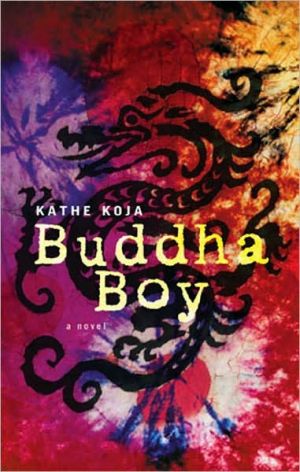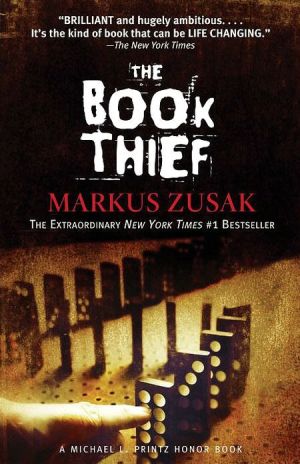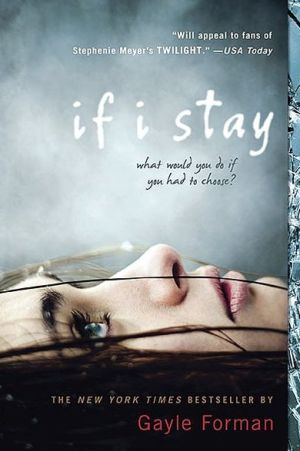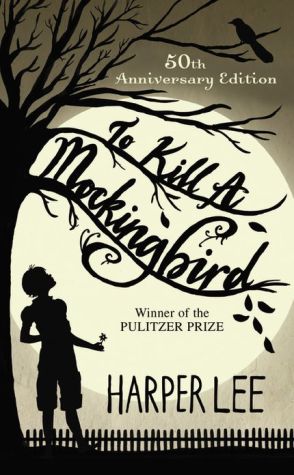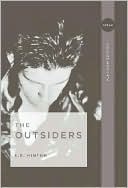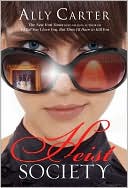Buddha Boy
The kids at school call Jinsen “Buddha Boy”—he wears oversize tie-dyed dragon T- shirts, shaves his head, and always seems to be smiling. He’s clearly a freak. Then Justin is paired with him for a class project. As he gets to know Jinsen and his incredible artistic talent, Justin questions his own beliefs. But being friends with Buddha Boy isn’t simple, especially when Justin realizes that he’s going to have to take sides. What matters more: the high school social order or getting to know...
Search in google:
The kids at school call Jinsen “Buddha Boy”—he wears oversize tie-dyed dragon T- shirts, shaves his head, and always seems to be smiling. He's clearly a freak. Then Justin is paired with him for a class project. As he gets to know Jinsen and his incredible artistic talent, Justin questions his own beliefs. But being friends with Buddha Boy isn't simple, especially when Justin realizes that he's going to have to take sides. What matters more: the high school social order or getting to know someone extraordinary?Publishers WeeklyNarrated by a high school sophomore, this novel explores the tenets of Buddhism via an unlikely friendship between two classmates. In a starred review, PW called it "a compelling introduction to Buddhism and a credible portrait of how true friendship brings out the best in people." Ages 12-up. (Nov.) Copyright 2004 Reed Business Information.
\ Publishers WeeklyNarrated by a high school sophomore, this novel explores the tenets of Buddhism via an unlikely friendship between two classmates. In a starred review, PW called it "a compelling introduction to Buddhism and a credible portrait of how true friendship brings out the best in people." Ages 12-up. (Nov.) Copyright 2004 Reed Business Information.\ \ \ \ \ VOYAWhen Jinsen arrives at Edward Rucher High School coatless in winter, sporting a bald head, begging for money in the school cafeteria, and talking about karma, he is immediately dubbed "Buddha Boy" by the resident bullies. Justin, the narrator of this second novel by Koja after her Straydog (Farrar Straus Giroux, 2002/VOYA June 2002), is forced to work on a school project with Jinsen and discovers the newcomer's incredible artistic talent. Justin is frustrated by Jinsen's refusal to fight back after he is beaten and his sketchbook is mangled by his tormentors. When Jinsen transforms the muddy, blotched pages into landscapes more beautiful than his original drawings, however, Justin is stunned. Mesmerized by Jinsen's art and philosophy, Justin befriends him and learns about Jinsen's hostile past. Justin is just beginning to embrace Jinsen's pacifist principles when Jinsen's wall-size banner of the school's mascot is vandalized. Justin's rage is uncontrollable as he hunts down the boy he knows is responsible. What follows is Justin's struggle to do what is right according to Zen. By combining the elements of art and the tenets of Buddhism, Koja takes readers past the stereotypes of the picked-on kid, the relentless bully, and the rescuing friend. It is a fresh look at a familiar story, and the conclusion is satisfying without being predictable or trite. Average students can read this slim volume in one or two sessions, but even readers who are intimidated or discouraged by longer books will want to finish this compelling tale of friendship and finding one's own inner strength. VOYA Codes: 3Q 4P J S (Readable without serious defects; Broad general YA appeal; Junior High, defined as grades 7to 9; Senior High, defined as grades 10 to 12). 2003, Frances Foster Books/Farrar Strauss Giroux, 128p, \ — Kim Zach\ \ \ Children's LiteratureJinsen is the hero of Budda Boy. He wears a "sloppy old T-shirt as big as a sail," begs for food at lunch, and smiles broadly and constantly even when he's being pelted with lunch leftovers. Justin, the narrator, wants to fit in and resents being hooked up with Jinsen for a project. Soon Justin's curiosity sparks a relationship that turns to caring. How can Jinsen live in a trailer with an elderly great-aunt, but own a tackle box filled with "really choice art supplies?" How can Jinsen stand emotionless when his art is destroyed and he is viciously beaten? As Justin's caring grows, so does his discomfort with bullying and his own reticence to stand up and speak out. It's not until the book's end that Justin finally learns how Jinsen's past bullying was linked to his transformation. Koja's writing is filled with constant dashes and paragraphs which begin mid sentence, as if to represent questions that tug at Justin's mind, or the way Jinsen's philosophy breaks into Justin's deadened sensibilities. These become almost a graphic element that measures how Jinsen's strength of character overcomes Justin's comfortable apathy. 2003, Farrar Strauss Giroux, Ages 11 up. \ — Susie Wilde\ \ \ \ \ KLIATTTo quote from the review of the hardcover in KLIATT, January 2003: High school, as we all know, can be a place of torture for those students who don't "fit in." The narrator here, Justin, does fit in pretty well, and even though he hates seeing other students terrorized and bullied, he has never interfered. He sees enough to know that the main instigator of most of the outrages in the school is an especially popular and successful student named McManus, who has the power to get other students to do his dirty work and avoids punishment himself. Into this situation comes a new student, a boy with a shaved head and odd clothes. The others quickly dub him "Buddha Boy," and at first Justin shares the disdain of the other students, even though he doesn't participate in the bullying. Justin's father is an artist and Justin likes art himself, so Buddha Boy, a.k.a. Jinsen, impresses Justin when he sees his drawing ability, which is incredible. A school project brings the two together, and as Justin finds out more about Jinsen's beliefs, his home life, and his background, Justin becomes Jinsen's friend and defender. Jinsen reveals that he once was a bully himself, like McManus, and that by studying martial arts and Buddhism, he has learned to curb his anger and become nonviolent. However, when McManus, in a fit of envy, vandalizes Jinsen's art project, even Jinsen is forced to the edge of his capability to control his rage. Justin learns a great deal from his involvement in this drama and from his friendship with Jinsen. His relationship with his father grows, as does his respect for the kindness of his mother. This is a brief story, but one that is filled with action and strong feelings. For thatreason, it will capture YAs and give them a story to ponder. (An ALA Best Book for YAs.) KLIATT Codes: JS*—Exceptional book, recommended for junior and senior high school students. 2003, Penguin, Speak, 117p., Ages 12 to 18. \ —Claire Rosser\ \ \ \ \ From The CriticsJustin and his friends Jakob and Megan are not total social outcasts at Rucher High, but they're not exactly part of the in-crowd—the jocks and bullies who seem to run the school. This is why they're not too keen on making the new kid's acquaintance. They don't want to be associated with a bald-headed monk in oversized T-shirts who begs for change during lunch, lives with his elderly great-aunt, and smiles even when it's clear to others he's in pain. But on his own, Justin reaches out to the artistically talented Jinsen or Michael Martin as he was known before his own transformation and in doing so, begins to contemplate the effects his actions may have on others. Justin learns the fruitlessness of anger, how hurting someone now can not only make another's life miserable, but have a negative impact on one's own life in the present and future, and most importantly, how good deeds coupled with kindness toward others can reward one immeasurably. 2003, Frances Foster Books, 128 pp., Ages young adult. \ —Laura Bullock\ \ \ \ \ School Library JournalGr 7-10-Kathe Koja's novel (Farrar, 2003) looks at bullying through the eyes of Justin, a high school sophomore who is intrigued by Jinsen, a new boy who shaves his head and begs for his lunch like a monk. But Justin has always been "in the middle," not too cool or too different, so he know it's best to avoid contact with this new kid who is already a target for pranks and jeers. When a class project throws the two boys together, their mutual interest in art leads to a quiet friendship. Despite increased harassment from a bullying crowd, Jinsen refuses to fight, seek revenge, or get school officials involved. The test comes when the peaceful boy's artwork is maliciously destroyed, and Justin confronts faculty and students who have looked the other way far too long. The cast of 18 well-cast actors is led by Spencer Murphy, who aptly conveys Justin's fears, ambivalence, and outrage. Sound quality is good with musical interludes to mark text breaks. Koja provides an accurate look at the internal and external conflicts of high school students, and her brief commentary adds valuable insights into what influenced her writing. Middle and high school libraries will find Buddha Boy a surefire springboard for discussions about bullying, peer pressure, and tolerance. It's thoughtful storyline and realistic characters will also appeal to public library patrons.-Barbara Wysocki, Cora J. Belden Library, Rocky Hill, CT Copyright 2004 Reed Business Information.\ \ \ \ \ Kirkus ReviewsKoja (Straydog, 2002) gives the tried and true "oddball new student vs. the bullies" theme a well-oiled workout. Comfortably invisible within the crowd, Justin at first wants nothing to do with new transfer Michael, or "Jinsen," to use his "spiritual name." After all, his shaved head, oversized shirt, and habit of wandering about the lunchroom with a begging bowl quickly earn him the nickname "Buddha boy" from alpha male McManus and his circle of goons. As he watches Jinsen respond calmly to escalating harassment, though, Justin's reserve begins to break down-particularly after he discovers that Jinsen is a superb artist, and learns that he had once been an incorrigible sociopath who had turned his life around with a conversion to Buddhism after being orphaned. Fortunately for the tale's credibility, Jinsen's self-possession isn't superhuman, and after two prized art projects are vandalized, only Justin's well-timed intervention gives him the moment he needs to regain his hard-won balance. Justin also does the friend thing by blowing the whistle on McManus, and unlike so many similar situations in teen fiction, justice is thoroughly, satisfyingly served. Koja barely touches on Buddhist practices and principles, but she does show how loving one's enemies rather that hating them often makes them crazy, as well as securing the moral high ground. Jerry Spinelli she is not (or not yet), but fans of Crash (1996), Loser (2002), and the like will enjoy the familiar scenery. (Fiction. 12+)\ \
